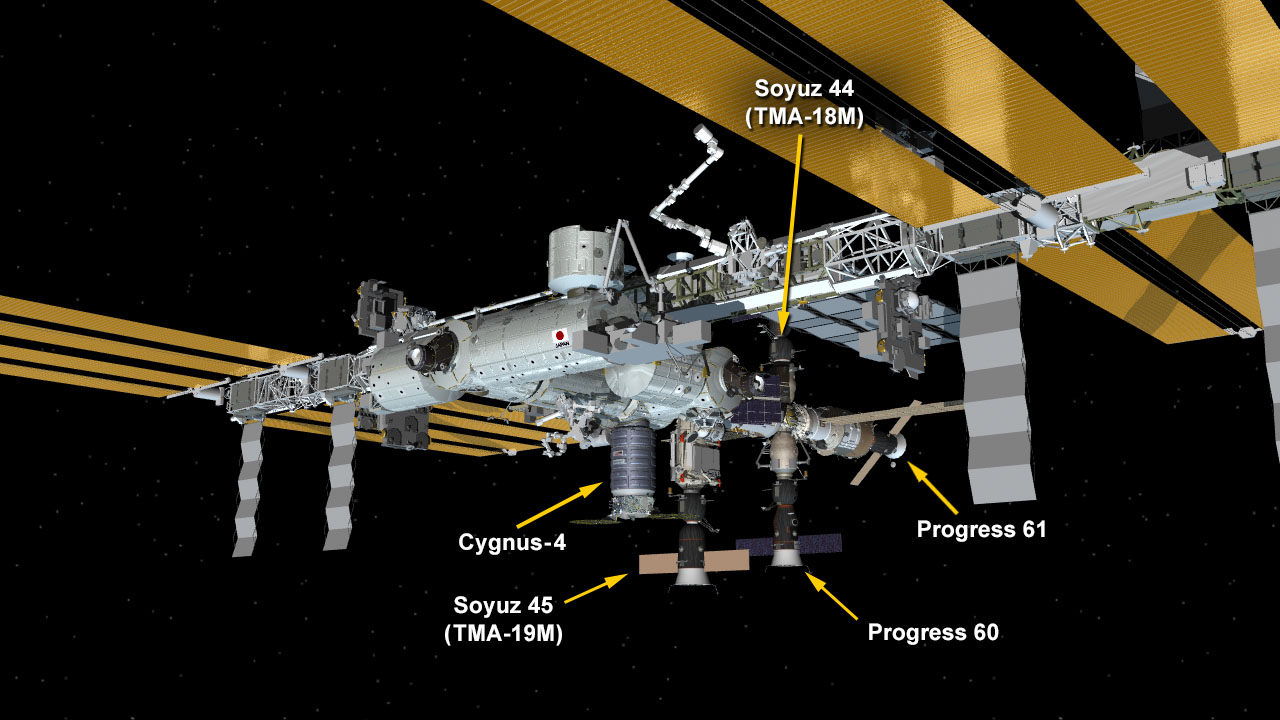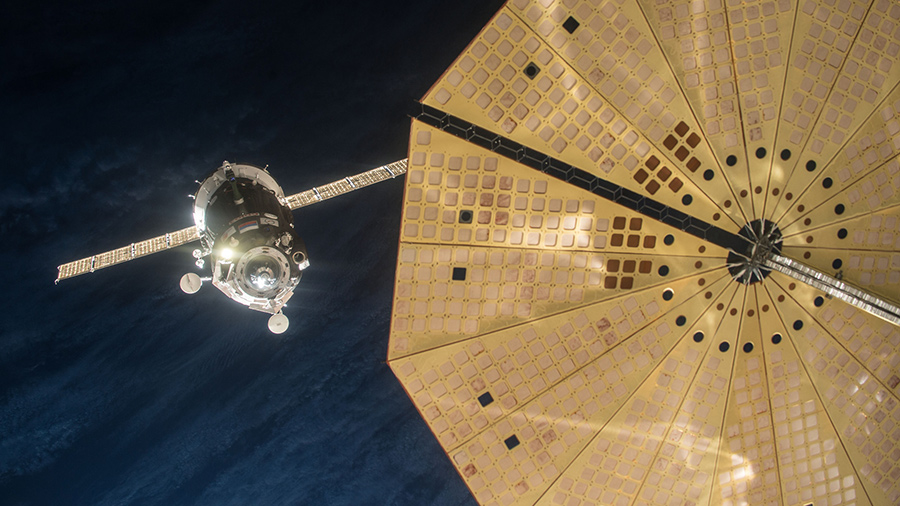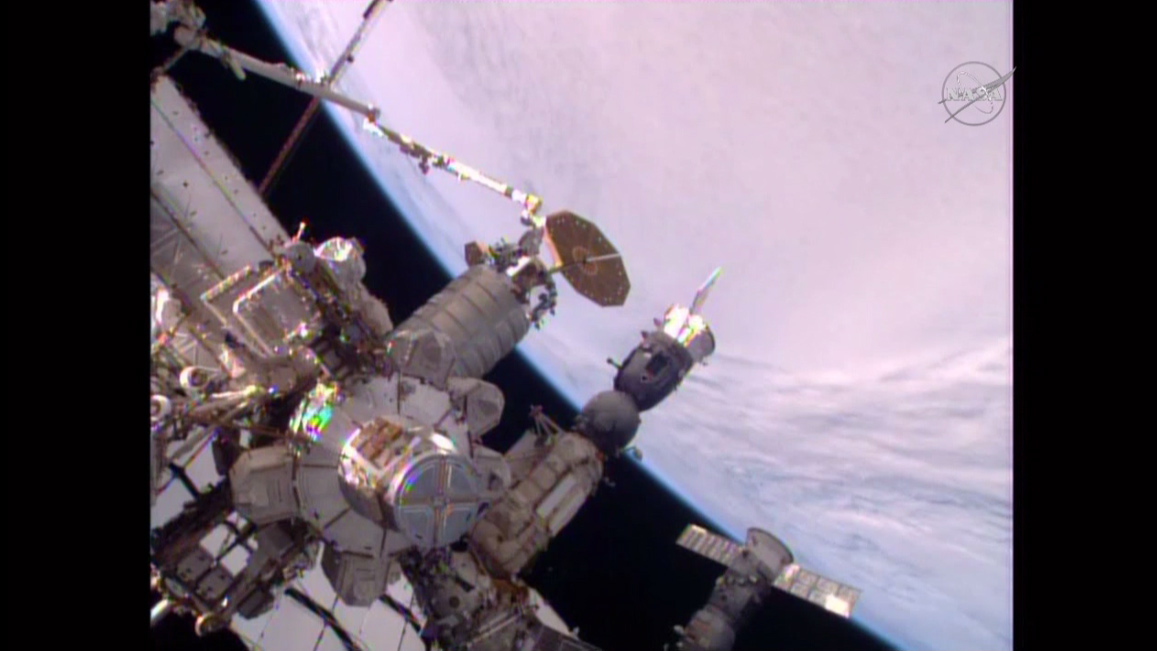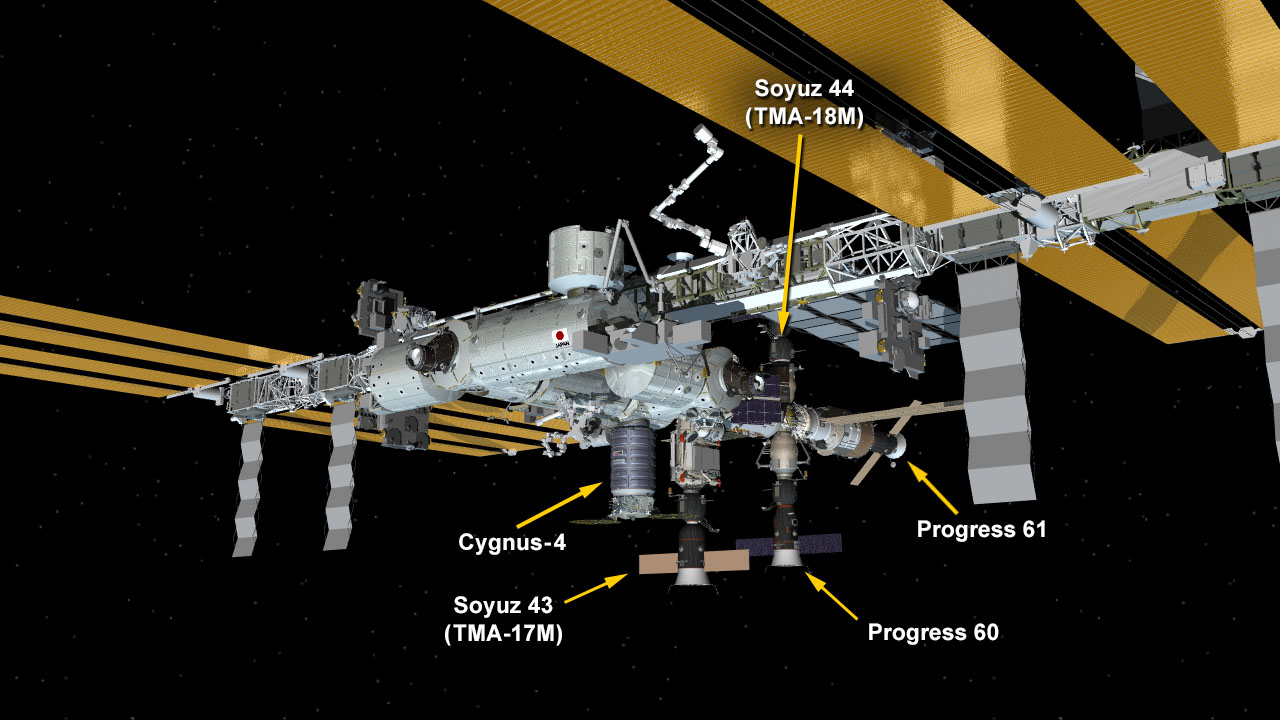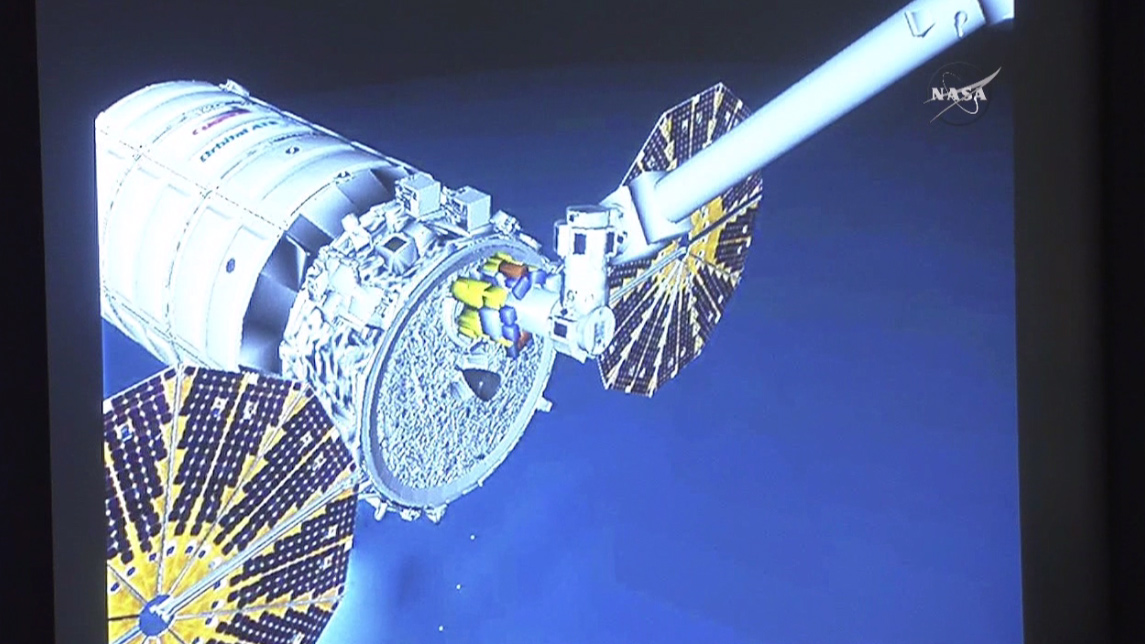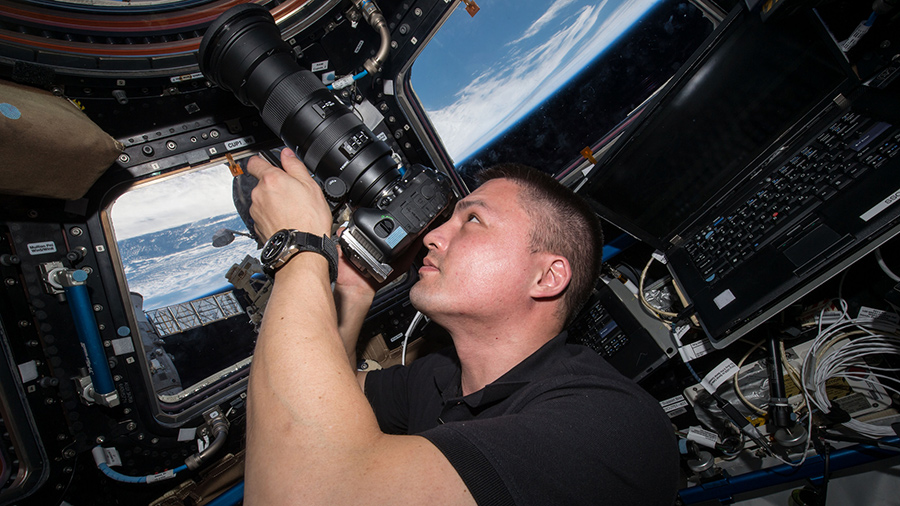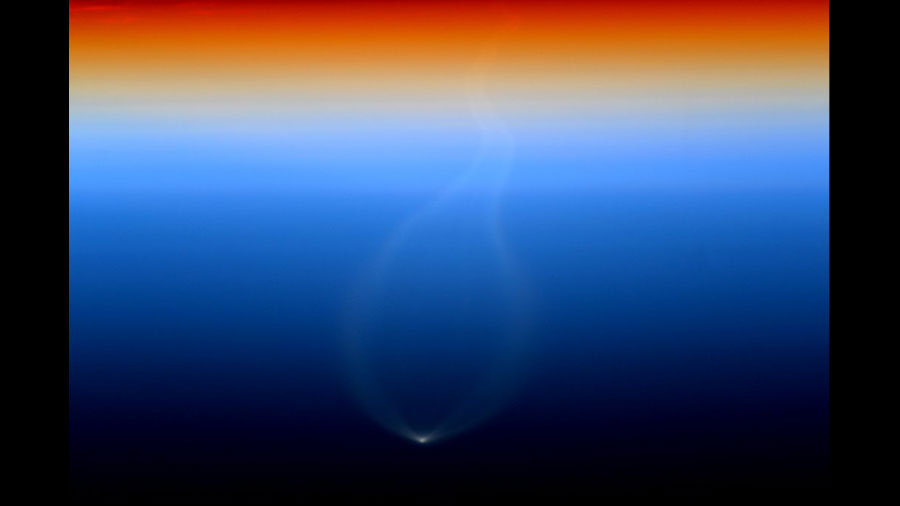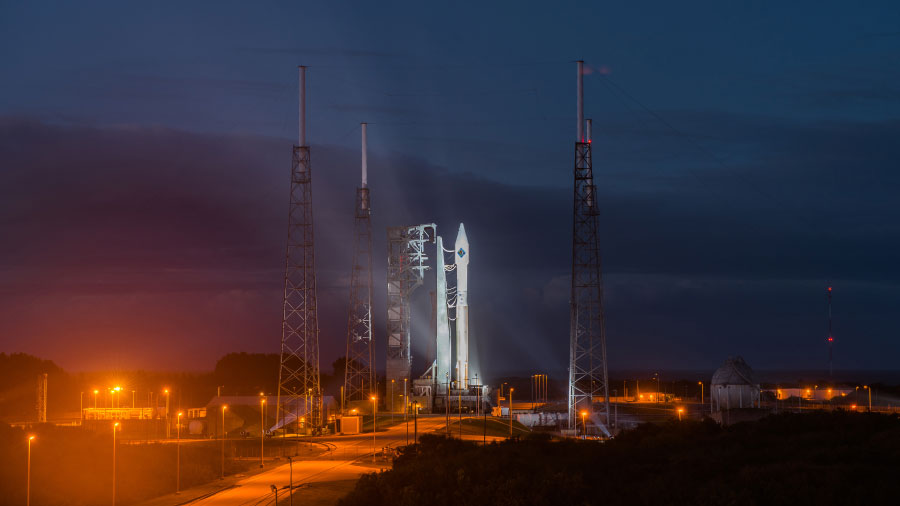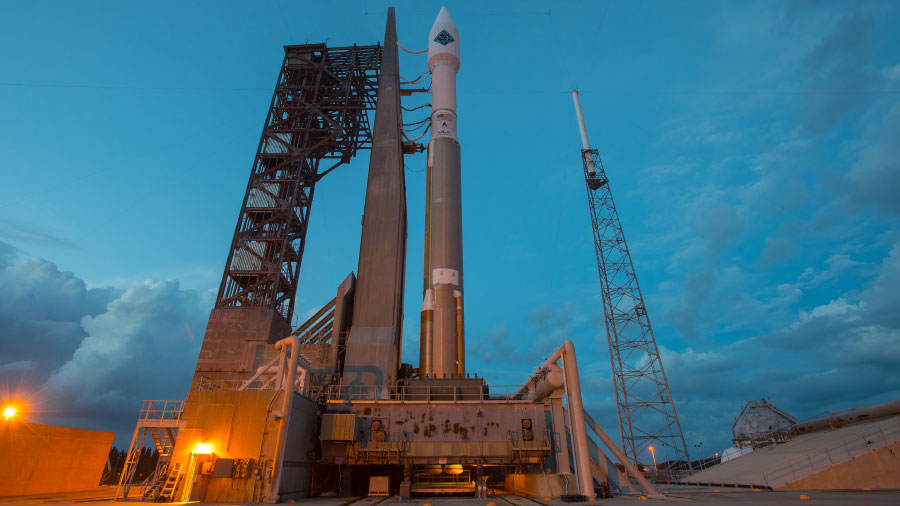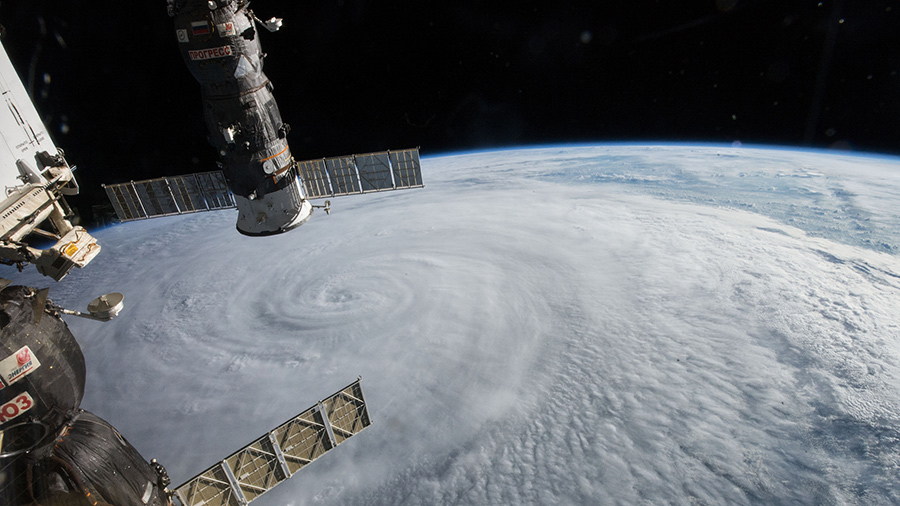
The six-member Expedition 46 crew worked on human research activities and unloaded cargo today. The three newest crew members — Flight Engineers Yuri Malenchenko, Tim Kopra and Tim Peake — continued familiarizing themselves with International Space Station systems and operations.
Commander Scott Kelly used an ultrasound during the morning to scan Flight Engineer Sergey Volkov’s eyes. Kelly then joined new station residents Kopra and Peake and unloaded cargo from the Cygnus private space freighter. Kelly later installed radiation detectors in the Columbus lab module. Peake filled out a daily questionnaire for the Space Headaches study.
Cosmonaut Mikhail Kornienko was in the Russian segment of the orbital lab getting the Progress 60 resupply ship ready for its undocking early Saturday morning. Malenchenko transferred gear and supplies from the new Soyuz TMA-19M spacecraft that arrived Tuesday. Malenchenko, who is on his fourth station mission, also photographed the condition of the Soyuz docking cone for inspection on the ground.

